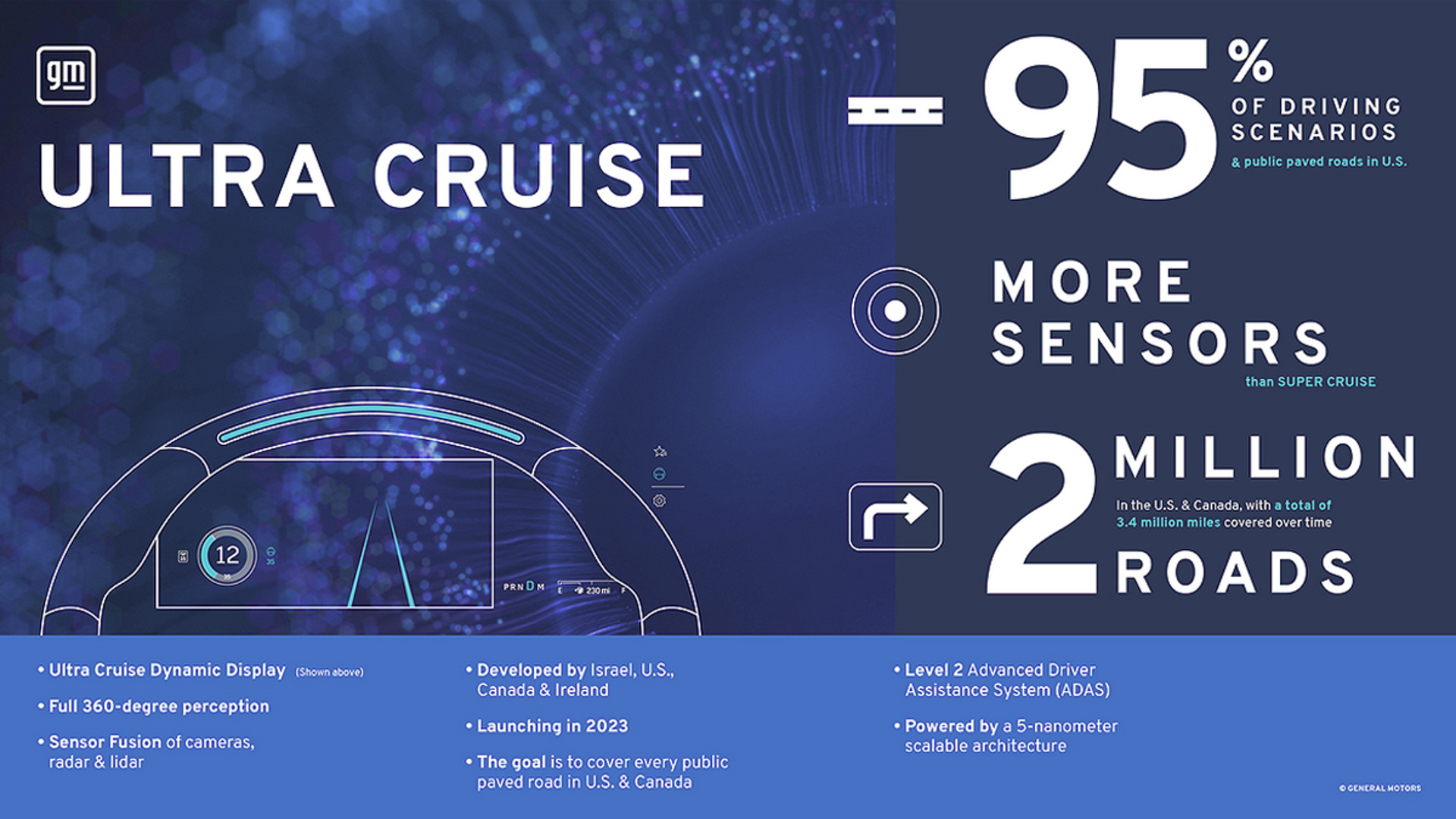General Motors will take the next step toward fully autonomous driving in 2023 when it launches a new Ultra Cruise driver assist system.
Ultra Cruise will enable hands-free driving in 95 percent of driving scenarios, and will work on highways, arterial roads, residential streets, and paved rural roads. At launch, Ultra Cruise will cover about 3.2 million kilometres of roads in the U.S. and Canada, but GM’s eventual goal is for it to safely drive on every paved road across both countries.
General Motors’ current driver assist suite, Super Cruise, only allows a driver to hand over control duties to the car for short periods of time on limited access roadways.
When it reaches the marketplace, Ultra Cruise will be positioned as the premium choice of GM’s two driver assist systems and make its debut in Cadillac’s lineup, while more affordable vehicles will offer the less-sophisticated Super Cruise suite. Chevrolet introduced Super Cruise to its lineup in the 2022 Bolt EV and EUV, while Cadillac now offers an upgraded Super Cruise 2.0 suite.
Using a combination of cameras and radar and lidar sensors, Ultra Cruise will maintain a 360-degree “view” of what’s happening around the car so that it can react to traffic control infrastructure, perform automatic and on-demand lane changes, follow speed limits, make turns, and enter and park in residential driveways.
GM says Ultra Cruise will, in a sense, be capable of learning through an event recorder that will communicate with GM’s engineers so they can make continuous improvements to the system.
Despite the impressive level of vehicle control Ultra Control promises, the in-car interface will be designed to keep the driver engaged in case they need to take over from the computers.

